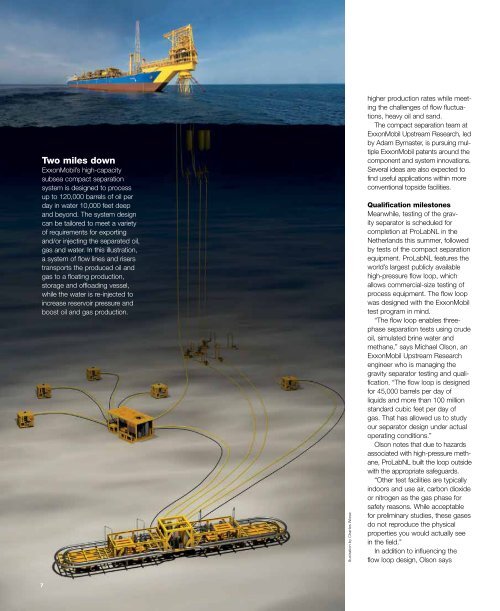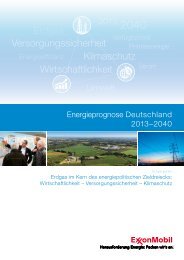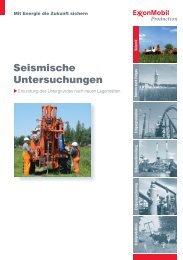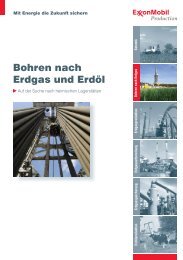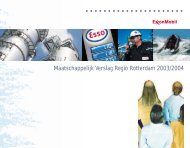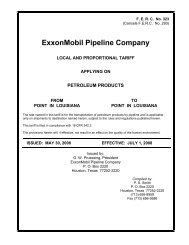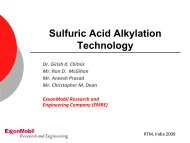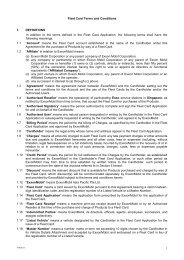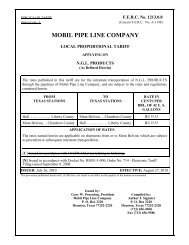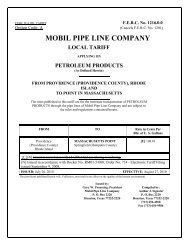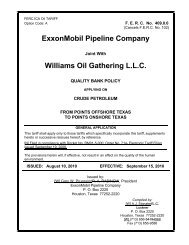2012 — Number 1 - ExxonMobil
2012 — Number 1 - ExxonMobil
2012 — Number 1 - ExxonMobil
You also want an ePaper? Increase the reach of your titles
YUMPU automatically turns print PDFs into web optimized ePapers that Google loves.
Two miles down<br />
<strong>ExxonMobil</strong>’s high-capacity<br />
subsea compact separation<br />
system is designed to process<br />
up to 120,000 barrels of oil per<br />
day in water 10,000 feet deep<br />
and beyond. The system design<br />
can be tailored to meet a variety<br />
of requirements for exporting<br />
and/or injecting the separated oil,<br />
gas and water. In this illustration,<br />
a system of flow lines and risers<br />
transports the produced oil and<br />
gas to a floating production,<br />
storage and offloading vessel,<br />
while the water is re-injected to<br />
increase reservoir pressure and<br />
boost oil and gas production.<br />
7<br />
Illustration by Charles Wiese<br />
higher production rates while meeting<br />
the challenges of flow fluctuations,<br />
heavy oil and sand.<br />
The compact separation team at<br />
<strong>ExxonMobil</strong> Upstream Research, led<br />
by Adam Bymaster, is pursuing multiple<br />
<strong>ExxonMobil</strong> patents around the<br />
component and system innovations.<br />
Several ideas are also expected to<br />
find useful applications within more<br />
conventional topside facilities.<br />
Qualification milestones<br />
Meanwhile, testing of the gravity<br />
separator is scheduled for<br />
completion at ProLabNL in the<br />
Netherlands this summer, followed<br />
by tests of the compact separation<br />
equipment. ProLabNL features the<br />
world’s largest publicly available<br />
high-pressure flow loop, which<br />
allows commercial-size testing of<br />
process equipment. The flow loop<br />
was designed with the <strong>ExxonMobil</strong><br />
test program in mind.<br />
“The flow loop enables threephase<br />
separation tests using crude<br />
oil, simulated brine water and<br />
methane,” says Michael Olson, an<br />
<strong>ExxonMobil</strong> Upstream Research<br />
engineer who is managing the<br />
gravity separator testing and qualification.<br />
“The flow loop is designed<br />
for 45,000 barrels per day of<br />
liquids and more than 100 million<br />
standard cubic feet per day of<br />
gas. That has allowed us to study<br />
our separator design under actual<br />
operating conditions.”<br />
Olson notes that due to hazards<br />
associated with high-pressure methane,<br />
ProLabNL built the loop outside<br />
with the appropriate safeguards.<br />
“Other test facilities are typically<br />
indoors and use air, carbon dioxide<br />
or nitrogen as the gas phase for<br />
safety reasons. While acceptable<br />
for preliminary studies, these gases<br />
do not reproduce the physical<br />
properties you would actually see<br />
in the field.”<br />
In addition to influencing the<br />
flow loop design, Olson says


